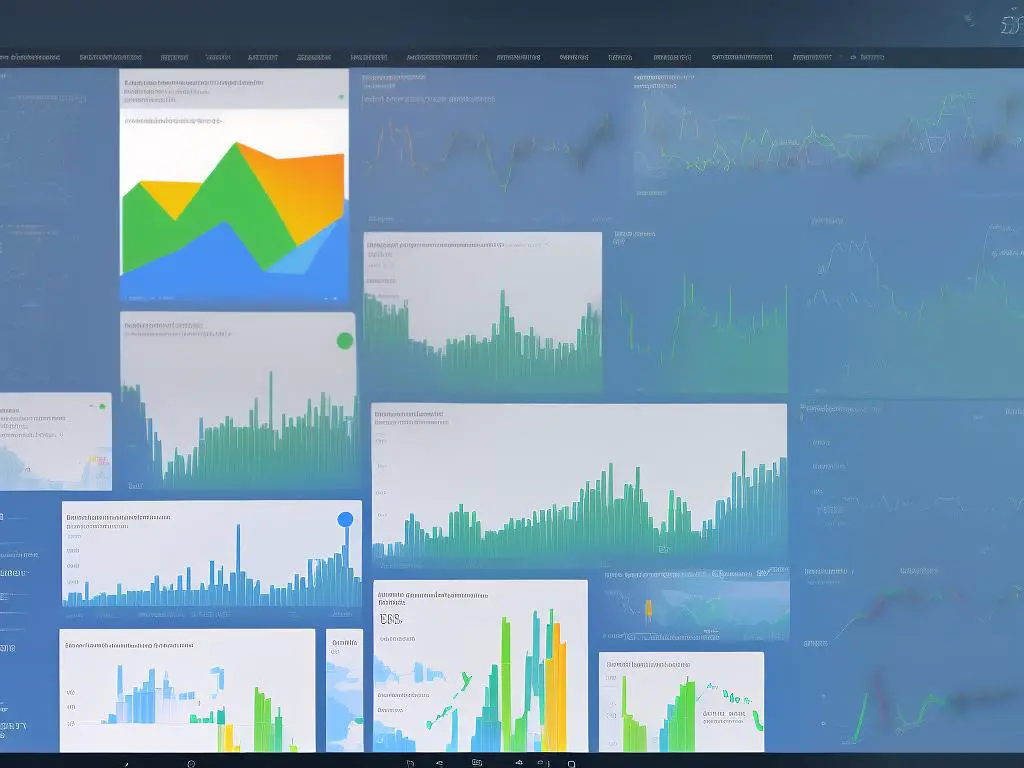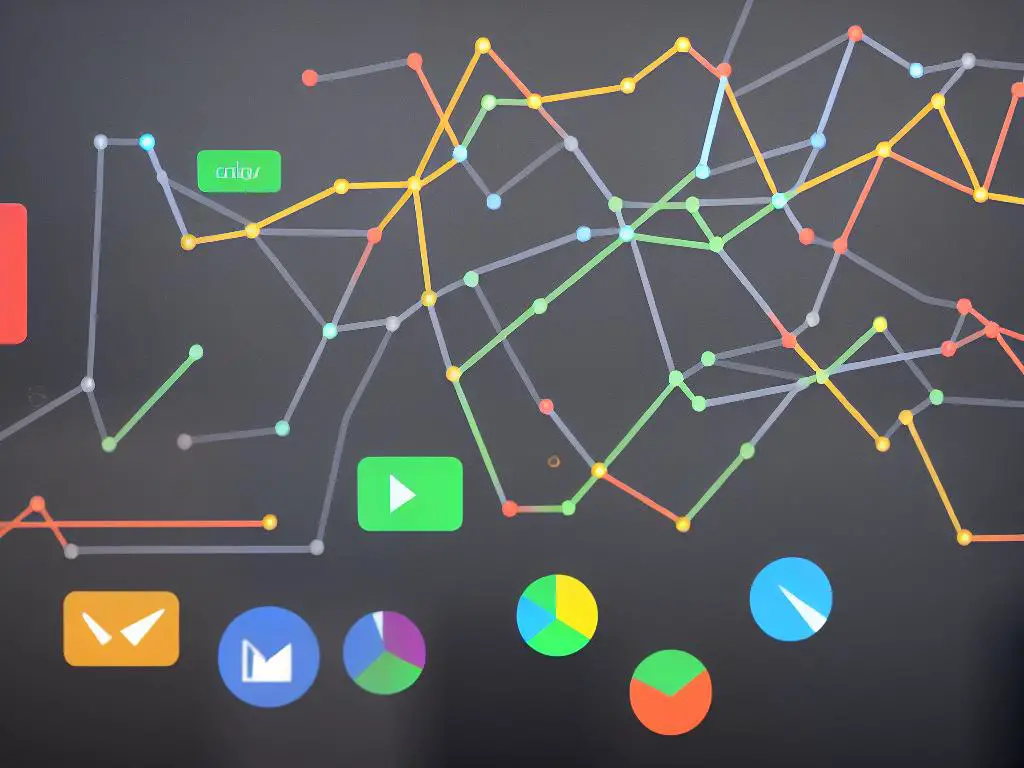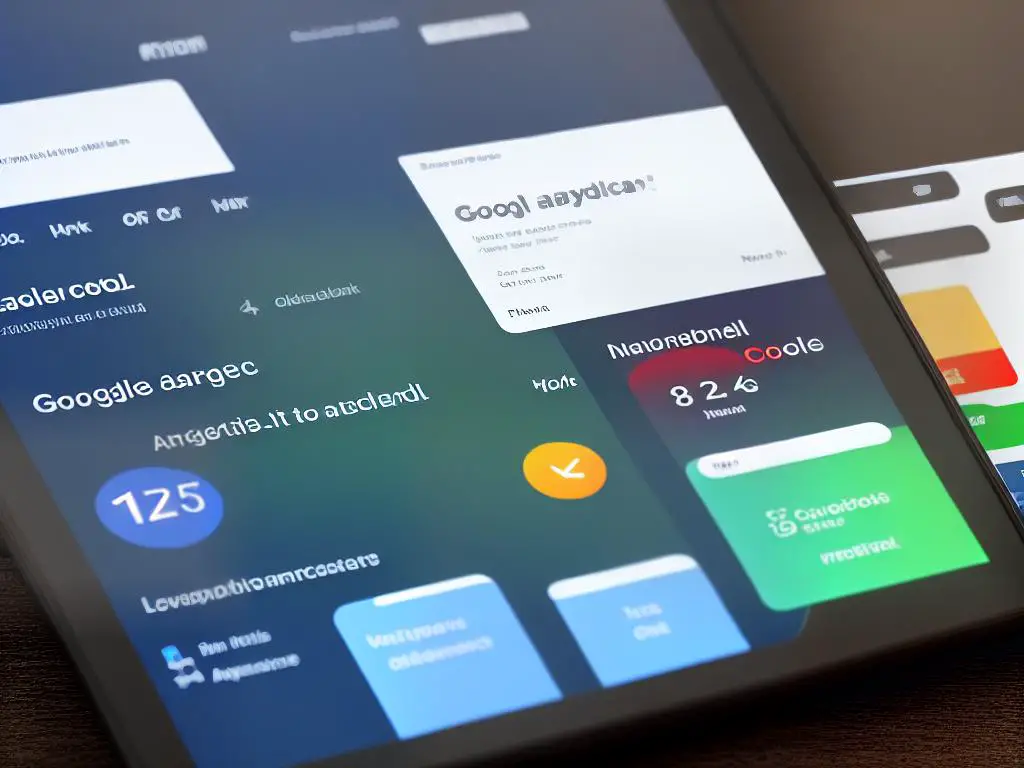Google Analytics 4 (GA4) is swiftly shaping the future of digital analytics by providing essential real-time reporting solutions. Whether you’re a business owner, a marketing enthusiast, or just someone curious about the capabilities of modern technology, understanding GA4 can grant you insight into data-driven decision-making processes and e-commerce trends. This discourse will provide an in-depth look at GA4 Real-Time Reporting, its features and capabilities, its benefits and limitations, and how it stands against other similar tools in the market. Real-world examples and practical instructions will be shared, aiming to enlighten on not just the technical details but also the various ways in which it imparts strategic advantages.
Overview of GA4 Real-Time Reporting
Google Analytics 4 (GA4) Real-Time Reporting
GA4 Real-Time Reporting is a tool developed by Google to provide users with a live snapshot of their website’s activity. It allows businesses, marketers, and website owners to track and analyze their website interaction in real time – a feature that is particularly valuable for tracking campaigns, monitoring site usage, or measuring immediate effects of some change or update on the site.
What Is GA4 Real-Time Reporting?
GA4 Real-Time Reporting is a part of the Google Analytics suite that displays live data concerning the performance of a website or application. This feature allows you to track who is on your site, what they are doing, where they are coming from, and the overall visitor logs within the past 30 minutes. GA4 real-time reports are designed to give businesses a fast insight into their website or app performance, making it easier to adjust their strategies and tactics instantly based on the live data they receive.
Importance of GA4 Real-Time Reporting
GA4 Real-Time Reporting is very important because it allows businesses to respond quickly to changes in user behavior. It is key to understanding the direct impact of specific campaigns or changes made to the website framework. This tool can provide immediate information on a particular release of a new product or blog post, the launching of a campaign, or changes to a site’s SEO.
Furthermore, GA4 Real-Time Reporting provides an opportunity to conduct split or A/B testing, allowing businesses to simultaneously try out different changes to their website and see in real time which option performs better. This way, businesses can make immediate, informed decisions based on hard data instead of making assumptions or waiting for end-of-day or weekly reports.
Who Uses GA4 Real-Time Reporting
GA4 Real-Time Reporting is used by a wide array of businesses, especially those with a strong online presence looking to monitor instant changes. Often, digital marketers, online retailers, content creators, and tech companies will utilize its features to track the performance of their online campaigns, posts, pageviews, referrals, or active users on their site.
For instance, an online retailer may use real-time reporting to monitor the traffic to their site during the launch of a new product. Similarly, a digital marketing agency may use it to track the immediate impact of a client’s marketing campaign. Furthermore, tech companies can use GA4 Real-Time Reporting to monitor the performance of their apps or online platforms in real time.
Overview
Leveraging GA4 Real-Time Reporting is integral for businesses across various industries in this rapidly evolving digital age. This powerful tool offers immediate access to data, allowing businesses to promptly respond to changes. Be it on a small scale such as analyzing the immediate impact of a blog post, or on a larger scale like a multinational firm overseeing the global release of a product, GA4 Real-Time Reporting provides invaluable real-time insights. These insights aid in enhancing strategies, boosting overall performance, and ultimately achieving success.

Features and Capabilities of GA4 Real-Time Reporting
Introducing Google Analytics 4 (GA4)
The latest edition of Google Analytics, GA4, brings a host of advanced features designed to delve deeper into user behavior on a given website. Among the essential tools of GA4 is the Real-Time Reporting feature. This tool grants businesses the ability to visualize and understand live activities on their website, thereby enabling them to make immediate and informed responses.
Real-Time Data Collection
GA4 real-time reporting provides a live feed of information related to user interaction on your website or app. The second a visitor lands on your site, GA4 can track their behavior. The data collected includes which pages or events the user interacts with, their geographical location, the device they’re using, and their source of traffic amongst other metrics. This real-time data can be beneficial for recognizing immediate trends like the popularity of a newly-launched marketing campaign or monitoring the performance of a website feature.
In-depth Reporting Options
The real-time reports in GA4 are extensive and easily customizable. The information is presented in a user-friendly interface with interactive charts and graphs. By default, these reports include an overview section (showcasing the number of users, events, and details about the users) and an event section (displaying a real-time stream of events happening on your site). Furthermore, GA4 permits users to set up custom reporting views that align with their specific needs.
For instance, you can create a report to focus solely on users who originated from social media or people who conducted a site search. This is a great way to see how well your social strategy is performing or understand if users are finding what they need on your site. You can also create and save multiple report views, each designed for specific purposes – like understanding user demographics or tracking a specific event.
Predictive Analytics
Aside from the real-time data monitoring and customizable reporting, GA4 offers predictive analytics. This tool uses machine learning and the collected data to predict future trends and user behaviors. For instance, the system can predict the likelihood of a particular user to churn or how much revenue you can expect to gain from a particular group of users in the next month.
To utilize this feature, navigate to the ‘Monetization’ section of GA4, click on ‘Predictive metrics,’ and you’ll find a series of predictive metrics like purchase probability and churn probability that you can add to your reports. These predictions can help your business strategize and stay ahead in your marketing efforts.
The Dawn of a New Era
The world of data analytics has awakened to a new epoch with the innovative competences encompassed by GA4 real-time reporting. This cutting-edge mechanism features characteristics such as real-time data tracking, adaptive reporting, and predictive analysis. The insights procured from these help businesses to delve into a better understanding of their customer base, allowing them to refine their websites instantly and formulate strategic, future-oriented decisions. Employing GA4 in an optimal manner can guide actions that considerably better the user interaction, thus enhancing the overall business performance.

Benefits and Limitations of GA4 Real-Time Reporting
Understanding GA4
GA4, also known as Google Analytics 4, is the most recent version of Google’s analytics toolbox, designed to help businesses keep track of user activities on their websites with great insight and finesse. Its real-time reporting capability furnishes instantaneous data concerning user interactions, granting users an up-to-the-minute insight into how their content is faring. In the following segment, we will explore the pros and cons of GA4 Real-Time Reporting, its role in assisting businesses to formulate data-driven decisions, any potential limitations concerning data gathering and assessment, and real-world case studies of businesses amplifying their strategies through the immeasurable power of GA4 Real-Time Reporting.
Benefits of GA4 Real-Time Reporting
One of the standout benefits of GA4 Real-Time Reporting is the instant access to user engagement data. Instead of waiting for traditional batch processing to complete, businesses can see how users are interacting with their site or app in real-time. This can significantly aid decision-making processes, particularly for time-sensitive marketing campaigns.
Another major advantage is the ability to track individual events effortlessly. GA4 allows businesses to set custom events, meaning they can track specific actions unique to their operations and objectives. For instance, an e-commerce site can track the “add to cart” action and see user responses to different product placements or sales events in real-time.
GA4 Real-Time Reporting is also incredibly useful for troubleshooting purposes. It enables businesses to monitor the impact of newly updated content or links, seeing immediately if something isn’t functioning as expected, allowing for quick rectification.
Limitations of GA4 Real-Time Reporting
Despite its tremendous benefits, there are a few limitations to GA4 Real-Time Reporting that companies should be aware of. Although the real-time data provides immediate insights, it is not comprehensive. Important metrics like demographic information and user interests are not included in real-time reporting, which cannot provide insights into long-term user behavior or complex user patterns.
However, the most pronounced limitation is the learning curve associated with mastering the GA4 interface, particularly for those familiar with the previous version. GA4’s structure is notably different and may require additional time and resources to understand fully.
Real-World Application of GA4 Real-Time Reporting
Numerous organizations have reaped the benefits of GA4 Real-Time Reporting. For example, a global sporting goods store utilized GA4 to track user response during a live event. Real-time data showed that users were highly engaged during the event, leading to an immediate increase in promotional push leading to a spike in sales.
In a different example, a popular health and wellness app used GA4 Real-Time Reporting to monitor a new feature release. They could see immediately that a misstep in the deployment caused user drop-offs, quickly rectify the error, and limit user dissatisfaction and loss.
Conclusion
The potency of Google Analytics 4 (GA4) and its Real-Time Reporting feature is best revealed when users strike a balance between live insights and in-depth data analysis. It’s important to note that while instantaneous data offers a fantastic solution for quick actions and prompt responses, it should be used in tandem with thorough analysis to fully harness the power of data-driven decision-making.

Comparing GA4 Real-Time Reporting with other similar tools
Introduction to Google Analytics 4 Real-Time Reporting
GA4 represents Google’s foray into the realm of real-time reporting, bringing an array of new features to the table that facilitate improved data-driven decision making. The enhancements in real-time reporting capabilities represent a significant leap from earlier versions, thus positioning GA4 favorably when pitted against other comparable tools in the marketplace.
GA4 Real-Time Reporting Strengths
One prominent advantage of GA4 real-time reporting is its capability to integrate with other Google tools seamlessly, such as Google Ads, making it easy for users to measure and evaluate the impact of their ad campaigns in real-time. In comparison, other tools like Mixpanel and Kissmetrics require extra steps or even additional third-party software to connect with advertising platforms.
GA4 also excels in its ability to process and report data in real time, far superior to what is available in Universal Analytics (UA). The maximum delay is just a few minutes, compared to several hours in UA. Compared to other similar tools, such as Adobe Analytics, which report in batches or with a delay of up to 2-4 hours, GA4 comes out ahead.
The Event-driven data model that GA4 revolves around records users’ interactions with your website or app as events, which are then able to be tracked in real-time. This event-centric focus gives GA4 an edge against many competitors in the real-time reporting space that still use session-centric models, such as Kissmetrics.
GA4 Real-Time Reporting Limitations
Where GA4 real-time reporting falls short compared to some options in the market is its complexity. The shift from a user-session-based model to an event-based model makes it less intuitive than tools like Hotjar or Crazy Egg, which have more user-friendly dashboards and simpler setups.
Google Analytics 4 also has a steep learning curve, particularly for users migrating from Universal Analytics. The absence of certain features, like direct funnel visualization, which can be found in alternative platforms such as Amplitude Analytics, is a downside for those who frequently use such feature in their data analysis.
Lastly, the personal data safety regulations, particularly in the European Union, place more restrictions on how much user information GA4 can use for reporting, a concern not as prominent for software like Qualaroo or Usabilla, which aren’t as affected by these limitations.
Conclusion
GA4 Real-Time Reporting may be a revolutionized analytics tool by Google, offering a lot of features that are beneficial for real-time data analysis and ad campaign evaluation. Compared to the competition, GA4’s Real-Time Reporting shines with its integration, faster data processing, and event-centric data model. However, it could improve its user-friendliness and fill the void left by missing features. While it isn’t ideal for those who need to comply with stricter EU data laws, GA4 Real-Time Reporting is undoubtedly worth considering for its various strengths and unique features.

Armed with knowledge about GA4 Real-Time Reporting’s functionalities, advantages and constraints, you’re better equipped to assess its relevance to your business or profession. Simultaneously, the comparison with other tools in the market lends a broader perspective on data analytic solutions available. Staying abreast of such cutting-edge technological advancements ensures you’re not left behind in this age of rapid digital transformation. Understanding GA4 and its capacities allows you to make informed decisions, harness the power of real-time analytics, adapt to evolving trends, and ultimately, drive your growth and success.

